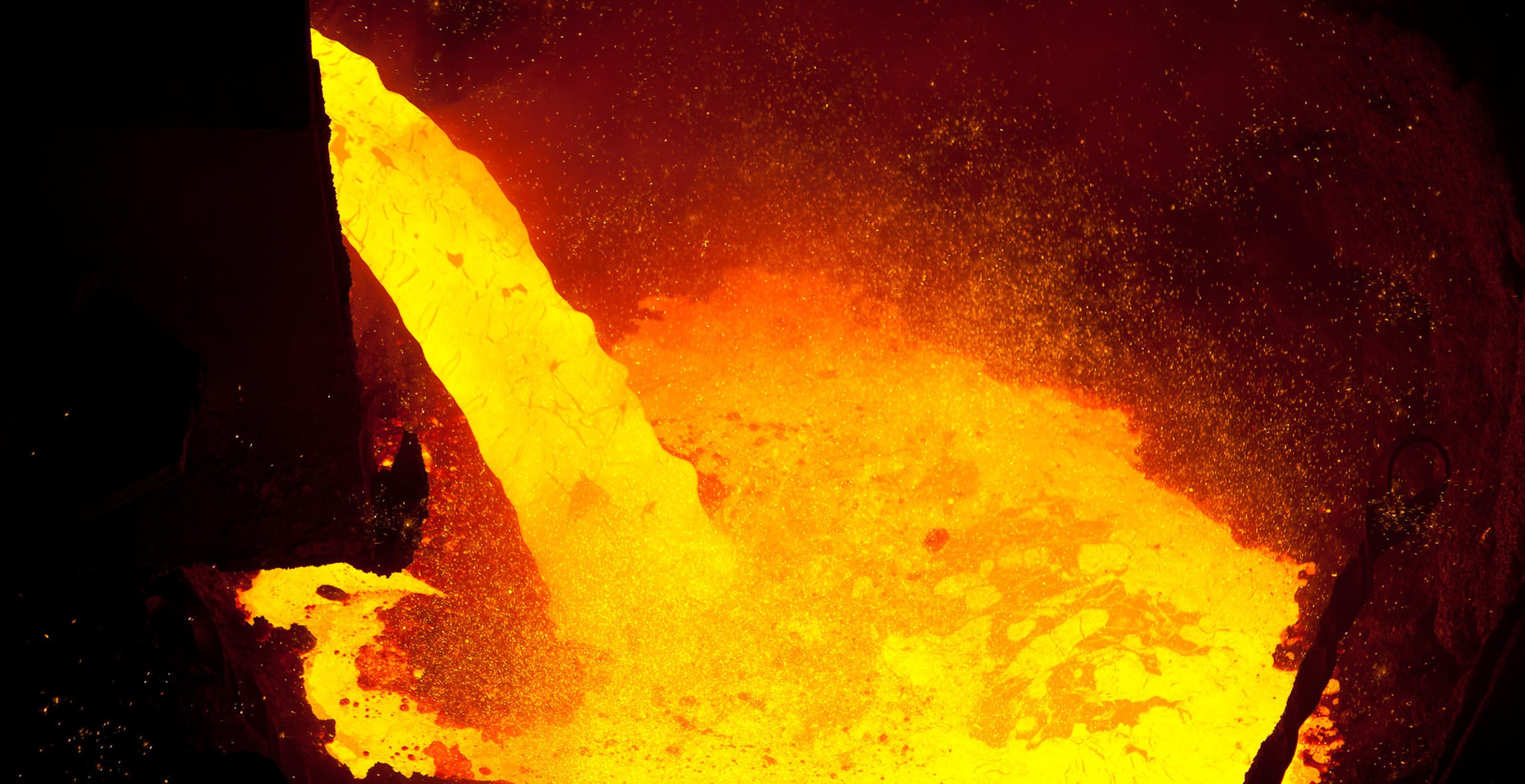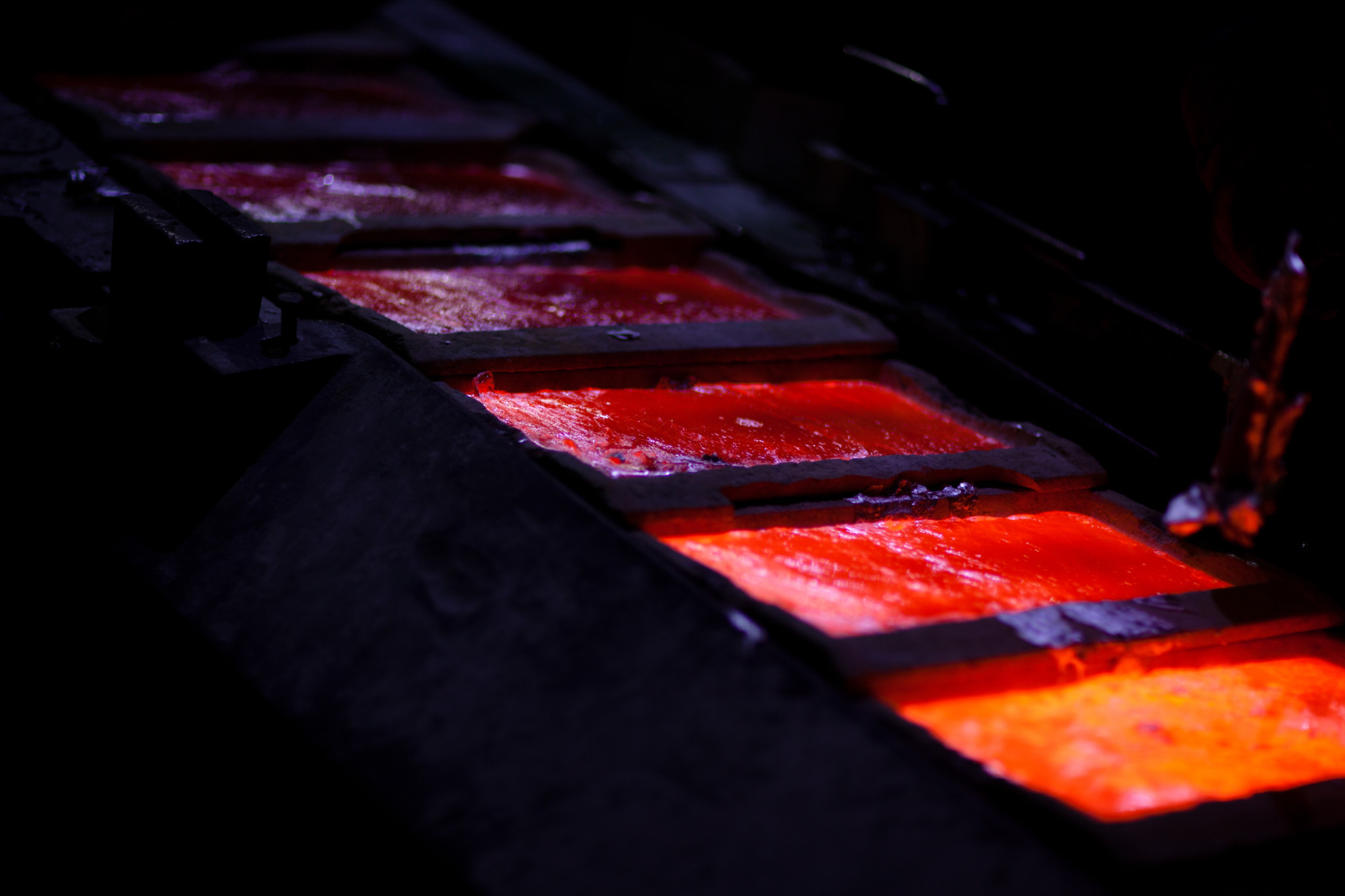

Molten Metal
Molten metal is the liquid state of metals when subjected to extreme heat. The process of working with molten metal requires precision, expertise and specialised equipment. Crucibles, furnaces and molds play a vital role in safely containing and manipulating this powerful substance. In foundries and other areas where molten metals are produced, body burns are a frequent injury among workers. Molten metal splashed onto a worker will stick to exposed skin and some fabrics, causing them to instantly ignite, leading to severe burns or death. Molten metal splash can commonly occur during a spillage or in the case of molten aluminium, when uncontrolled moisture or wet materials are introduced causing the metal to violently explode throwing dangerous molten metal into the air.
Molten Metal
Aluminium and steel producers, foundries and other industrial metal-working operations face the challenge of protecting their employees from the hazards associated with molten metal splash and sparks. This responsibility carries serious legal consequences when companies fail to provide and use personal protective equipment designed specifically for the type of molten metal hazard that is present.
Smelter and foundry workers, fabricators and welders are the most commonly injured in smelters, foundries and welding shops. However, any worker or employee who passes near a point at which metal is heated to a molten state can suffer an injury from a molten metal splash.
Selecting the right molten metal protection can make the difference between an accident becoming severe or fatal.
PR97® IS THE WORLD'S PREMIER HOT METAL FABRIC
PR97® is the fabric of choice for protection against molten metal. PR97® is recognised throughout the world as a leading FR fabric for secondary protection in the molten metal industry due to its superior protective properties: uncompromising safety, natural comfort, cost effectiveness and proven performance. Designed specifically as a very high performance hot metal safety fabric, PR97® provides workers with unparalleled safety and performance.

Molten Metal Splash – The Purpose of Secondary Protective Clothing
Secondary protective clothing in the hot metal industry is defined as protective clothing for continuous wear during work activities in designated workplace locations in which intermittent exposure to molten substance splash, radiant heat and flame source are possible.
The essence of secondary protective clothing in this industry rests in two critical factors:
The textile must be flame resistant so that it will not ignite and continue to burn when the heat source is removed.
In the specific instance of exposure to molten metal the textile must demonstrate the ability to shed molten metal from its surface without sticking.
Aluminium Smelting and Remelting
Molten aluminium is typically handled at 700°C to 788°C (1300°F to 1450°F) to avoid premature solidification. Contact with molten aluminium can cause severe burns and create a serious fire hazard. Mixing water or other contaminants with molten aluminium can cause explosions, which are more frequent in the aluminium scrap remelting process due to moisture and contamination being prevalent in scrap. These explosions range widely in violence and can result in injury or death as well as destruction of equipment and plant facilities.
Why So Dangerous?
Prior to the collapse of the Twin Towers at the World Trade Centre, powerful explosions were heard within the buildings. The explosions were later attributed to large amounts of molten aluminium being mixed with water and other contaminants. Expert opinion believes that when the airplanes entered the towers and lodged presumably near the centre of the buildings, the airplane hulls became trapped inside an insulating layer of building debris. The opinion further believes that the hulls, rather than the buildings, absorbed most of the heat from the burning jet fuel. The intense heat melted the aluminium in the hulls, which then flowed downward through the building gaps and stairways. It is believed the molten aluminium reacted with water from the sprinkler systems on the floors below and other contaminants, such as plasterboard and rust, resulting in violent explosions. The force generated by these explosions is the likely reason why the towers collapsed and why so quickly. To date this opinion remains unproven due to the non-release of any remaining World Trade Centre debris for further testing.
The aluminium industry has reported more than 250 aluminium/water explosions since 1980. Alcoa Aluminium carried out an experiment under controlled conditions, in which 20 kilograms of aluminium smelt was allowed to react with 20 kilograms of water, to which some rust was added. The explosion destroyed the entire laboratory and left a crater 30 metres in diameter.